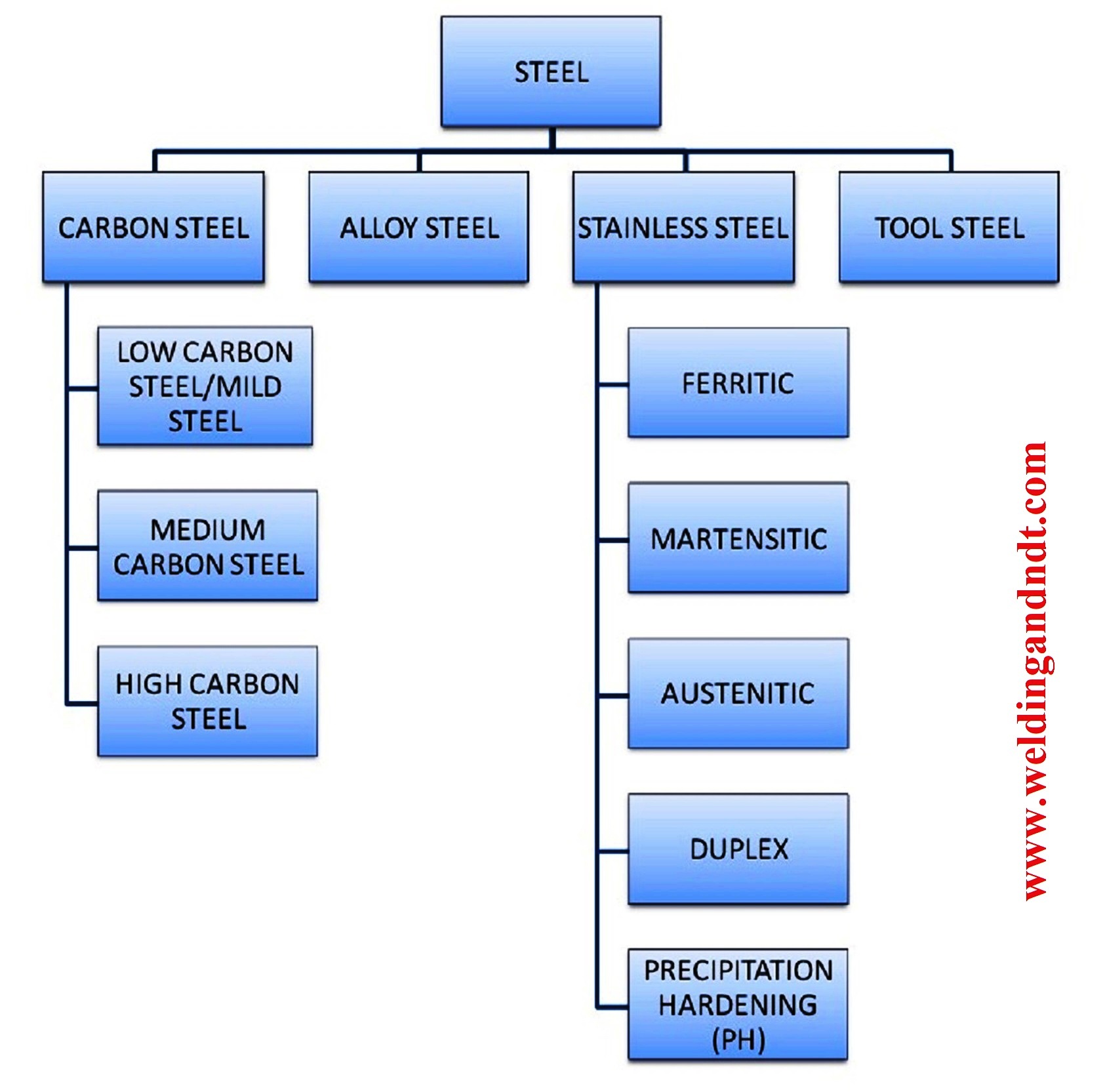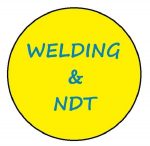
What is Steel?
Steel is an alloy of Iron (the concept of alloy is explained below) and the principal or main alloying element is Carbon. Hence,
The main or base element in steel is: Iron
Main (principal) alloying element in steel is: Carbon
Other alloying elements in steel are: Manganese, Silicon, Nickel, Chromium, Molybdenum, Vanadium, Titanium, Niobium, Aluminum, etc
What is an Alloy?
When different elements are mixed in smaller quantities in the base (main) element, the resulting product is called an alloy of the base element.
Hence steel is an alloy of Iron because Iron is the base element or the main constituent in steel and the main alloying element is Carbon. Some other elements such as Manganese, Silicon, Nickel, Chromium, Molybdenum, Vanadium, Titanium, Niobium, Aluminum, etc. are also added in varying quantities to produce different grades (or types) of Steel.
However, there are some exceptions to the above definition of steel like interstitial-free (IF) steels and type 409 ferritic stainless steels, in which carbon is considered an impurity.
What Are the Different Types Of Steel?
Based on the chemical compositions, Steel can be categorized into four (04) basic types:
-
Carbon Steel
-
Stainless Steel
-
Alloy Steel
-
Tool Steel
1. Carbon Steel:
Carbon steel is the most utilized steel in industries and accounts for over 90% of the total steel production. Based on the carbon content, Carbon steels are further classified into three groups.
-
Low Carbon Steel/Mild Steel
-
Medium Carbon Steel
-
High Carbon steel
Carbon content is given in the table below:
| S.No. | Type of carbon steel | Percentage of Carbon |
| 1 | Low Carbon Steel/Mild steel | Up to 0.25% |
| 2 | Medium Carbon Steel | 0.25% to 0.60% |
| 3 | High Carbon steel | 0.60% to 1.5% |
2. Stainless Steel:
Stainless steel is an alloy steel that contains 10.5% Chromium (Minimum). Stainless steel exhibits corrosion resistance properties, due to the formation of a very thin layer of Cr2O3 on its surface. This layer is also known as the passive layer. Increasing the amount of Chromium will further increase the material’s corrosion resistance. In addition to Chromium, Nickel, and Molybdenum are also added to impart desired (or improved) properties. Stainless steel also contains varying amounts of Carbon, Silicon, and Manganese.
Stainless steels are further classified as;
1. Ferritic Stainless Steel
2. Martensitic Stainless Steel
3. Austenitic Stainless Steel
4. Duplex Stainless Steel
5. Precipitation-Hardening (PH) Stainless Steel
Ferritic Stainless Steel: Ferritic steels consist of Iron-Chromium alloys with body-centered cubic crystal structures (BCC). These are generally magnetic and cannot be hardened by heat treatment but can be strengthened by cold working.
Austenitic Stainless Steel: Austenitic steels are the most corrosion-resistant. It is non-magnetic and non-heat-treatable. Generally, austenitic steels are highly weldable.
Martensitic Stainless Steel: Martensitic stainless steels are extremely strong and tough but not as corrosion-resistant as the other two classes. These steels are highly machinable, magnetic, and heat-treatable.
Duplex Stainless Steels: Duplex stainless steel consists of a two-phase microstructure consisting of grains of ferritic and austenitic stainless steel (i.e Ferrite + Austenite). Duplex steels are about twice as strong as austenitic or ferritic stainless steels.
Precipitation-Hardening (PH) Stainless Steels: Precipitation-Hardening (PH) Stainless Steels possess Ultra high strength due to precipitation hardening.
3. Alloy Steel:
In alloy steel, varying proportions of alloying elements are used, to achieve desired (improved) properties such as weldability, ductility, machinability, strength, hardenability, corrosion resistance, etc. Some of the most used alloying elements and their effects are as follows;
Manganese – Increases strength and hardness, decreases ductility and weldability
Silicon – Used as deoxidizers used in the steel-making process
Phosphorus – Increases strength and hardness and decreases ductility and notch impact toughness of steel.
Sulfur –Decreases ductility, notch impact toughness, and weldability. Found in the form of sulfide inclusions.
Copper – improved corrosion resistance
Nickel – Increases hardenability and Impact strength of steels.
Molybdenum – Increases hardenability and enhances the creep resistance of low-alloy steels
4. Tool Steel:
Tool steels have high carbon content (0.5% to 1.5%). Higher carbon content provides higher hardness and strength. These steels are mostly used to make tools and dies. Tool steel contains various amounts of tungsten, cobalt, molybdenum, and vanadium to increase the heat and wear resistance, and durability of the metal. This makes tool steels very ideal for use as cutting and drilling tools.

NDT level I or level ll or level lll all study link sanding me please Sir. I Request for you………
Dear Mr. Praphulla biswal
Thank you for visiting my website. I am planning to upload both study materials and preparatory questions for NDT level II and III exams. It will take around 2 to 3 months, please be in touch for the updates. You can also watch my welding and NDT tutorial videos on http://www.youtube.com/weldingandndt
Regards
sandeep Anand
Can you organize study materials and classes for NDT personnel qualifications under 9712.
Regards
SRINIVASAN
9892258785
President IIW INDIA
I found this listing very interesting and useful. One suggestion would be to list the stainless steels in the order:
Martensitic
Ferritic
Austenitic
No suggestions after this.
The reason for my suggestion is that martensitic and ferritic stainless steels are essentially iron-chromium alloys and should be grouped together. The martensitic stainless steels have the lower chromium contents and thus lower corrosion resistance. Listing these three in the order I have suggested gives the approximate order of corrosion resistance and is a common way of listing them in many other documents.
Dear Mr. Bob Heidersbach
Thank you for visiting my website, your suggestions are valuable for me. Yes you have suggested the most appropriate method of grouping of stainless steel, Certainly i will do the changes. I request you to kindly give your valuable feedback on my other articles too.
Regards
Sandeep Anand
Dear Sir,
Thank you for visiting my website. Yes I can organize study materials and classes for NDT personnel qualifications under 9712, even I will upload many relevant topics on my website and my YouTube channel also.
Regards
Sandeep Anand
Nice articles sir, sir i have need to ASNT level 3 study material on topics on NDT basics &RT level 3.I am very happy , when you can post this types of articles.Finally you can do great job.
Sir,I request you to make an article names title as
“ how the steels varey with respect to chemical composition”
Expectation
This article would may clearly say about :
with a some permanent elements what elements to be added in what ratio to convert as different types of steels.
In a simple form of understanding
Dear Sandip Sir,
There is no words for such a good works.Thanks a lot for sharing valuable lessons.
Dear Sir,
Please let me know the filler metal for
X2CrNiMoN22-5-3 (1.4462) to S355J2.
Thanks sir keep doing
Sir please explain how select filler wire through section.i have seen your video on the same topic.please explain with section wise it will better for more understanding.
Thank you.
Dear Mr. Sandeep
I appreciate very much your articles related to the welding phenomenon
Best regards
eng. Cezar Popa
Dear Sir,
I requested to you can you write a article about piping isomatric drawing please….
Thanks & regards
Rajat singh
Steel is a product of carbon and hydrogen, with the hydrogen part being the positive charge. As the metal ages, alloys are formed out of the carbon, oxygen, and nitrogen that naturally occur in iron ore. In its purest form, steel is iron with little to no carbon or other additives, although alloys can contain amounts of carbon or other elements to make the material stronger or more wear resistant. The main types of steel are cold rolled, hot rolled, and cold formed, with the latter being the less common and therefore more expensive type. They are also classified by their distribution within the steel industry, with different types being used for different applications, although all of them are important to a company’s ability to produce quality products.
Topic: Steel, Stainless steel is a very informative topic and easily understood Subject. Very informative and almost sent more than a year to understand these topics through ASME STD PDF and Internet sources. you made it easy for everyone to understand. Keep updating the topics, Sir.
Hi …
In extrusion process head flow channel get sticky every size change time . We tried many Temp Setting and Polishing of surface still problem not rectified . What is cause rubber sticky in head flow channel